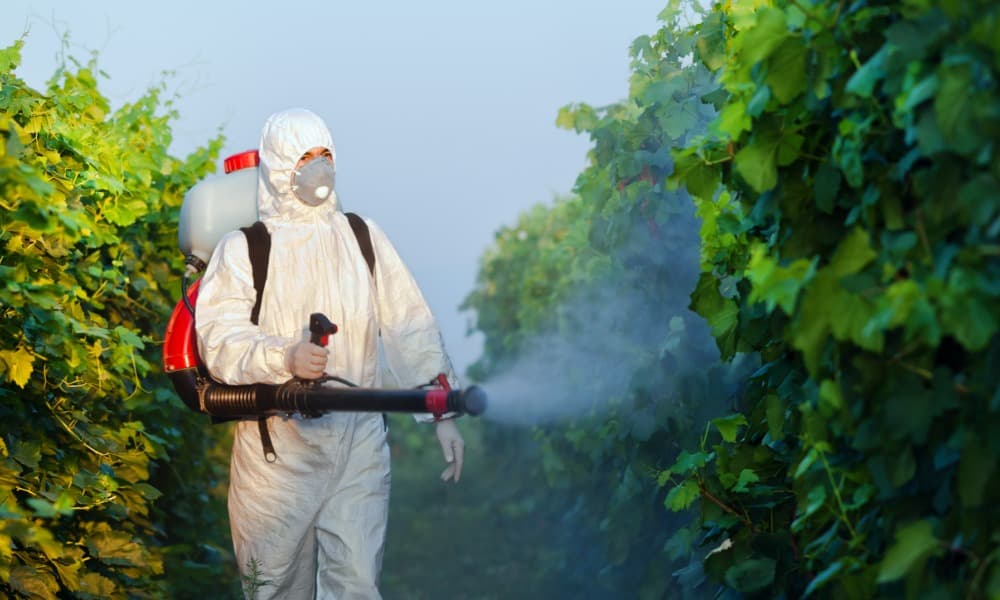The wine industry is one of the oldest and biggest industries in existence. According to research, “the Global Wine Market Size accounted for USD 489.3 billion in 2021 and is estimated to achieve a market size of USD 825.5 billion by 2030 growing at a CAGR of 6.1% from 2022 to 2030.”
While the projections might be promising, there are many issues that threaten this growth. The wine industry, like many others, is facing numerous challenges, including climate change, pests and disease, and a shortage of vineyard workers, among other challenges that are affecting vineyards and wineries.
A quest for revolution
To foster longevity, a revolution must happen in the wine industry to create long-term value while taking into consideration how the industry operates in ecological, social, and economic environments. Indeed, there’s a quest for innovative strategies to improve the quality and quantity of grapes and wine.
Strategies that prioritize sustainability in the face of challenges that threaten the wine industry should be embraced. This, of course, includes digitalization and technology, which will help improve efficiency, productivity, and sustainability.
Luckily, stakeholders are today putting innovation at the heart of what they do. The wine industry is embracing technology to help winemakers improve the quality and quantity of their products.
At the core of these innovations is robotics – the design, development, and use of machines (robots) to accomplish certain tasks.
A case study: PhytoPatholoBots
Researchers at Cornell University have developed an autonomous robot called PhytoPatholoBots (PPB) that will patrol four vineyards in spring 2023, gathering data on the condition of each grapevine. By combining this data with a decade of grape breeding breakthroughs, the researchers are refining the robot to allow growers to evaluate each vine, leaf by leaf, in real-time.
While the PPB rollout is perhaps the most well-known, it isn’t the only project innovation disrupting the wine industry. Other robots are currently in use in different parts of the world, too. From weeding to de-suckling to harvesting, robotics are taking over the vineyards – in a good way.

Here are some cutting-edge technologies behind the success of vineyard robotics:
1. Sensors
A sensor is the basic unit of a robot. Sensors are devices with inbuilt mechanical, electrical, or chemical features used to measure the surrounding environment and pass signals to the robot for executing tasks.
2. Computer vision
Computer vision involves cameras that feed information to the robot and enable it to locate and access the vines in a vineyard. The visual inputs (images and videos) are sent to the grower, who can easily identify leaf defects and other issues for immediate action.
3. The Global Positioning System (GPS)
GPS is a U.S. government-owned satellite-based radio navigation system that provides users around the world with positioning, navigation, and timing (PNT) services. The technology can be integrated into any system using the Application Programming Interface (API). Robotics often rely on GPS services to position themselves in the vineyard.
4. Machine learning
Machine learning (ML) conditions a robot in such a way that it can learn from its own mistakes and develop the best algorithms for executing its tasks without human intervention. Through learning and self-training, a robot develops advanced methods to identify vineyard best practices, adapt, and avoid actions that may jeopardize the quality of vines.
Benefits of robotics in the wine industry
Technology has the power to transform every industry. But for change to happen, stakeholders must be alert and willing to act to avoid being left behind. Here’s how grape growers can use robots to improve outcomes and reduce pesticide use.
Robotics for improved outcomes
The main challenge hindering grape growers from increasing production is the lack of information on crop conditions. Regular monitoring of vine health variability in a large vineyard is almost impossible with manual estimation methods.
For generations, grape growers have primarily relied on their honed skills for grape growing and harvesting. Discerning healthy grapes from rotten or unripe ones has been a task that required human judgment – as well as their hands and eyes. This made cultivating, weeding, pruning, spraying, and harvesting of grapes inefficient, tedious, and costly.
To address vineyard needs, several machines have been designed. Mechanical grape harvesters, for instance, have been around since the 1950s. While these machines make the work easier and significantly increase output, they can’t distinguish healthy, ripe grapes from rotten or unripe ones. Harvesters also tend to damage the grapes and vines, rendering them unusable.
Because of this, there’s an increasing need for a solution that combines both human skills and machine capabilities for increased yields and overall outcomes. This is where robotics come in.
Robots, such as Cornell’s PhytoPatholoBots, present the next-generation opportunity for improved outcomes in the wine industry. The machine effectively moves around the vineyard, autonomously scanning for things like leaf color, crop nutrition, pests, and weeds. The information is sent to the vintner in real time for action, resulting in improved outcomes.
Robotics for reduced pesticide use
Did you know that almost all grape varieties grown today are highly susceptible to various types of mildew? And that for the last 140 years, grape growers have managed using multiple applications of chemical fungicides.
Indeed, pesticides and fungicides have potentially negative effects on growers’ health and also pose adverse effects on the environment.
By bringing VitisGen’s genetic and robotics innovations to the vineyard, the new Cornell project aims to encourage growers to embark on widespread plantings of new VitisGen disease-resistant grape varieties. “Adoption of these new varieties alone has the potential to reduce pesticide use by 90%,” Lance Cadle-Davidson, co-project director.

Precision farming practices also present an effective way to reduce the negative impacts of pesticides in the vineyard, while still producing enough grapes to satisfy growing demand.
The use of advanced robotic sensors, for instance, allows individual monitoring of vines, spotting the slightest problems before they spread, and applying chemicals with honeybee precision. This significantly reduces pesticide use.
It comes down to this…
As the world awaits the deployments of Cornell’s PhytoPatholoBots (PPB), the message is clear: The time is ripe for the wine industry to reach new heights, thanks to advancements in robotics technology. Finally, guiding the global wine industry into the 21st century is taking shape.
Are you excited about robots in the wine industry? Let us know in the comment section, and don’t forget to share this post with friends.